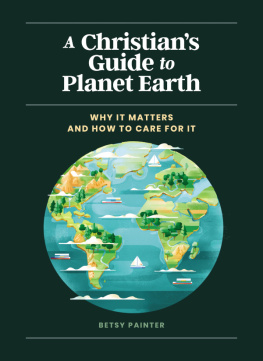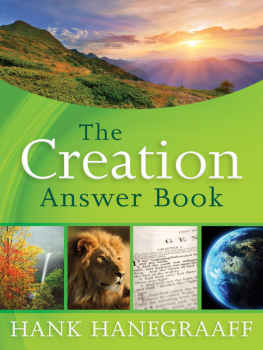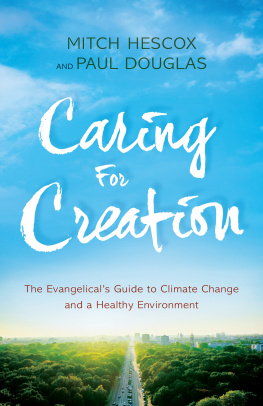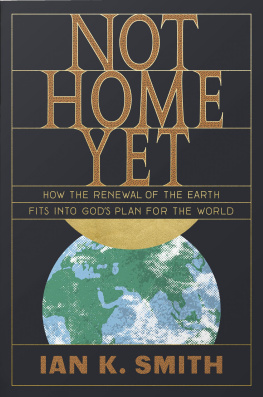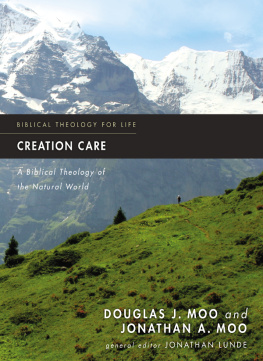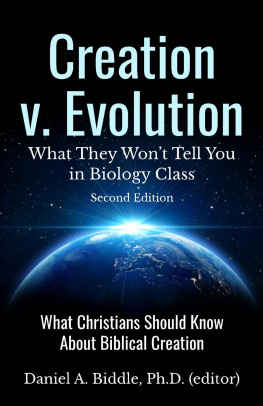Please note that footnotes in this ebook may contain hyperlinks to external websites as part of bibliographic citations. These hyperlinks have not been activated by the publisher, who cannot verify the accuracy of these links beyond the date of publication.
I T IS A PLEASURE TO WRITE THE FOREWORD FOR B ETSYS BOOK , A Christians Guide to Planet Earth. Betsy served as an intern for A Rocha USA while a student at Yale Divinity School. A Rocha USA, where I serve as director, is a nationwide community of Christians working in biodiversity conservation and helping others care for creation, and we were blessed to have her as part of our team, where we experienced firsthand her enthusiasm for Gods creation. In this book she offers poignant insights and practical ways to be a responsible Christian in the face of significant ecological challenges.
As we witness the continual destruction of habitat, the overexploitation of natural resources and species, the pollution of the oceans, or our induced changes to the climate, it all seems intractable and too big to fix. As problems increase, our perceived ability (or inability) to respond meaningfully feels overwhelming and can lead to deep anxieties. An emerging psychological condition called eco-anxiety fosters this sense of doom and pending ecological disaster in us. These are not phantom worries we carry around but rational responses to our growing awareness of environmental problems and our direct experiences living as part of Gods creation.
At A Rocha USA, people frequently come to us asking, What can I do? to address these overwhelming problems. Many are Christians who are relieved to find an organization like ours, which is part of a worldwide family of A Rocha organizations that have been carefully attending to creation for nearly forty years, spanning twenty countries. People want to understand which actions they can take to make a positive local and global impact. Knowing where to start can be a challenge.
A Christians Guide to Planet Earth is an excellent place to start. It offers a wealth of practical information, recommendations, and basic steps for taking action. Betsy provides a helpful overview of why and how to get started that is both scientifically and theologically informed.
One important theme in this bookand one not often explored in this contextis for Christians to sustain hope. Hope, not in the sense of a blind or defiant optimism but out of confidence that all creation is part of Gods redemptive purpose. The notion that Gods work of salvation extends to all creation is challenging for many Christians. We tend to think primarily of the human family benefiting from Gods redemption in Christ, but the story is much larger. Certainly, human flourishing is an important aim. Betsy simply encourages us to extend our notions of restoration and flourishing to the nonhuman creation as well.
I think it helps to remind ourselves that this is Gods world, and our Creator loves the creation. We are invited into a unique role of service as honored participants in Gods redemptive work that extends to the full community of creation and testifies to the hope that God will one day redeem this world and inaugurate the kingdom on earth as it is in heaven.
Betsy provides numerous ways to move toward meaningful action that can make a difference in our lives and on this planet we are privileged to inhabit. My recommendation is to choose one of her ideas or suggestions that captures your imagination and pursue it with enthusiasm.
Mark Purcell, Ed.D.
Executive Director, A Rocha USA
The earth is the L ORD s, and everything in it.
P SALM 24:1 NIV
W HATS YOUR EARLIEST MEMORY IN NATURE ? F OR MANY OF US IT occurred right outside our childhood homes. For me, I was wrist deep in dirt, sitting uphill from a creek lined with oaks and willows. With my moms garden shovel, I scooped up dirt and molded it into an ant hill and sprinkled grass into the nearby hole to make a bed for grasshoppers. It was an ant and grasshopper duplex.
My childlike faith, fresh as heaven, colored my vision with wonder. Everything I saw and touched was made by God, from the rocks I picked out to the grasshoppers I caught between my fingers. I felt a giddy delight in my responsibility to care for the critters in my yard as I built them homes.
God has built us a remarkable home, this planet Earth. We can view creation in a variety of ways: as something to be exploited without restraint or as a vague backdrop to the day-to-day activity of our lives, for instance. In this book, though, I hope to offer a different view. Its not a new view, rather an ancient way of seeing and interacting with nature thats part of the deep history of the Christian faith.
This book is an invitation to engage with nature and the Creator in a biblical way and wonder at the world through the lens of faith. Its designed to stir your heart to love all of Gods creation, to learn to see nature with reverence and kindness. We will reclaim our God-designed connection to the planet and our role in bringing it toward a state of flourishing for Gods glory and as a service to people, particularly vulnerable populations, who depend upon it.
This book is an invitation to engage with nature and the Creator in a biblical way and wonder at the world through the lens of faith.
To do this well, we need to equip our minds with the knowledge of how the planets systems work. Well explore what the best available science reveals to us about diverse environments, from wetlands to mountains. When I built the ant and grasshopper homes, my motivation was right, but I was wrong about their habitat needs. The ants never noticed their carefully crafted hills, and the grasshoppers (ungratefully) bounded away from their beds. Likewise, without the relevant knowledge, our work can miss the mark. However, when we study and know creation well, we can cultivate and protect it more effectively.

